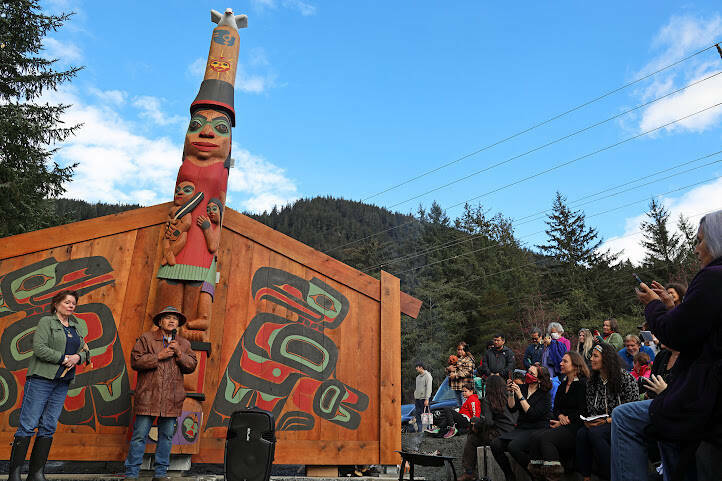Our Tlingit people reside in Southeast Alaska and Canada. We have existed in Alaska for about 15,000 years, or approximately 750 family generations. Our Tlingit traditions have been the cornerstone of our survival as Indigenous people.
Our songs, Tlingit ceremony, Koo.eex is a ceremony that honors ancestors, relationships, history and clans. When a member of the Eagle Clan passes away, the Eagle family members will invite the Raven Clan to an honor ceremony. Food, gifts and items of value will be given to the opposite clan. The opposite clan will respectfully honor in the Tlingit way by comforting their Tlingit hosts with Tlingit oratory, respect and songs that show unity and respect.
Our subclans of the Eagle and Raven are named after the animals that we were taught to respect because the animal and its spirit gave sustenance to the life of the clans. The clan names are interwoven and are based on respecting the opposite clan spirit and the clan member. Our belief has been the key to our survival for millenniums. Clan disputes were eventually resolved with peace because a spouse member was married to the opposite clan. Unity and respect were enforced for thousands of years because we respected the opposite clan by inviting them to the ceremony.
We respect the words of the late Dr. Walter Soboleff, he wrote:
“If someone of one moiety marries another member of the same moiety, it is regarded as though a brother and sister had married. In the past, marriage to someone of the same moiety was considered a kind of witchcraft.”
Our clan house and traditions are sacred, just as our clan regalia, art, ceremonies, and clan symbols are. Our clan house belongs to the clan leader and clan members. Our clan house does not belong to the spouse who is of the same clan. All clan leaders must be held to a higher standard that honors our clan beliefs and they must marry outside of their descent group, which ensures a distinction between the father’s side and the mother’s side of the family. The strength of our clans is based on matrilineal blood lineage, which means that we inherit our mother’s clan, and this has always been the Tlingit way. Our matrilineal bloodline has been our tradition for time immemorial, just as our clan protocol is Tlingit law.
Sealaska, Sealaska Heritage Institute, and tribal government entities have a responsibility to support our Tlingit Protocol and Integrity. Ten years ago, if a light fixture fell from the ceiling during a Tlingit ceremony, then our ancestors sent us a message that a clan leader must marry into the opposite clan and all Tlingits should support our matrilineal bloodline to be a clan leader. A named clan leader who marries a person of the same clan, should not be a clan leader.
• Ray Austin is of the Thunderbird Clan (Shungukeide) and a shareholder of Sealaska.

